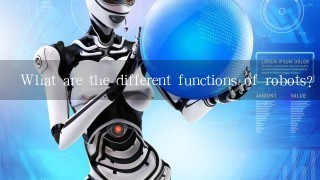What are the different functions of robots?

Core Functions:
- Production: Robots can perform repetitive tasks, such as assembly, welding, and painting, increasing production efficiency and reducing human error.
- Transportation: Robots can move materials and components within a factory or between different locations, improving logistics and reducing transportation costs.
- Assembly: Robots can assemble parts together, such as electronics, appliances, and furniture.
- Inspection: Robots can inspect products or components for defects or imperfections, improving quality control and reducing waste.
- Maintenance: Robots can perform maintenance tasks, such as cleaning, inspection, and repair, reducing downtime and increasing equipment lifespan.
Advanced Functions:
- Humanoid Robotics: Robots that resemble humans in appearance and behavior, capable of performing tasks that require social intelligence, such as customer service, education, and healthcare.
- Cyber-Physical Systems: Robots that integrate physical and digital components, allowing them to interact with the physical world and make real-time decisions.
- Multi-Robot Systems: Robots that work together to perform complex tasks, such as construction, mining, and disaster relief.
- Mobile Robots: Robots that can move freely within a workspace, performing tasks such as cleaning, inspection, and delivery.
- Service Robotics: Robots that provide services to humans, such as healthcare assistants, customer support representatives, and personal assistants.
Other Functions:
- Research and Development: Robots are used in research labs to perform tasks such as sample preparation, data collection, and analysis.
- Education: Robots can be used as educational tools to teach students about programming, engineering, and other STEM subjects.
- Entertainment: Robots are used in entertainment applications, such as motion capture, animation, and robotics shows.
Note: The specific functions of robots can vary depending on the industry, application, and manufacturer.



























































